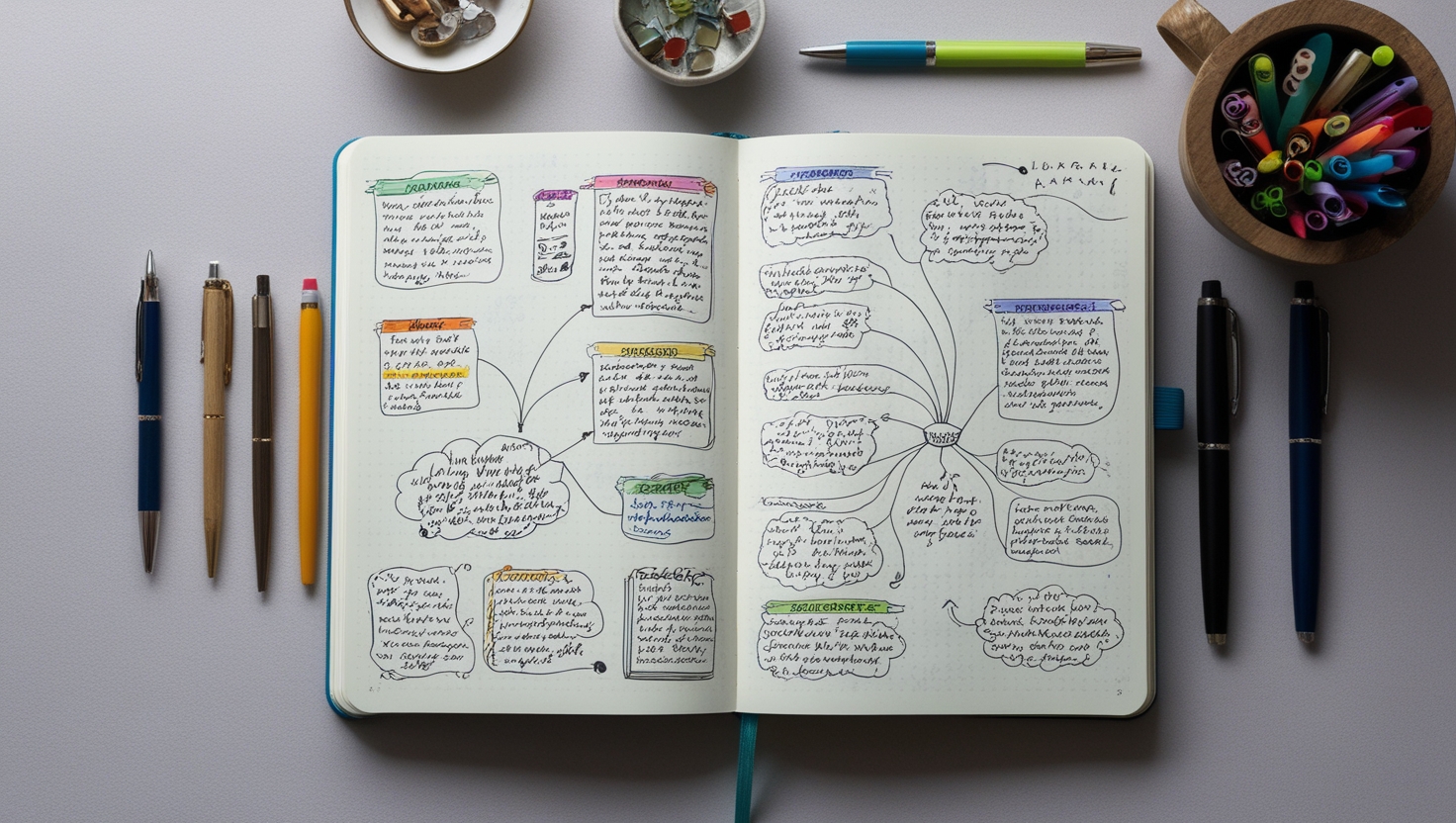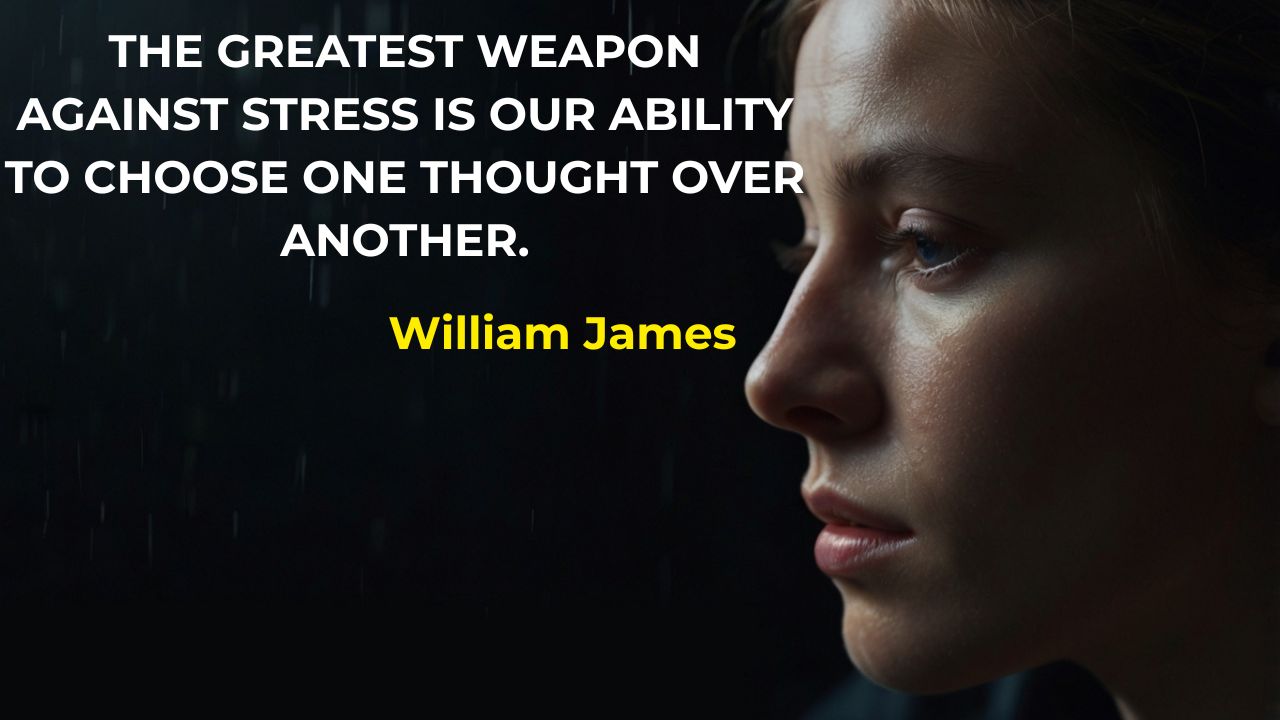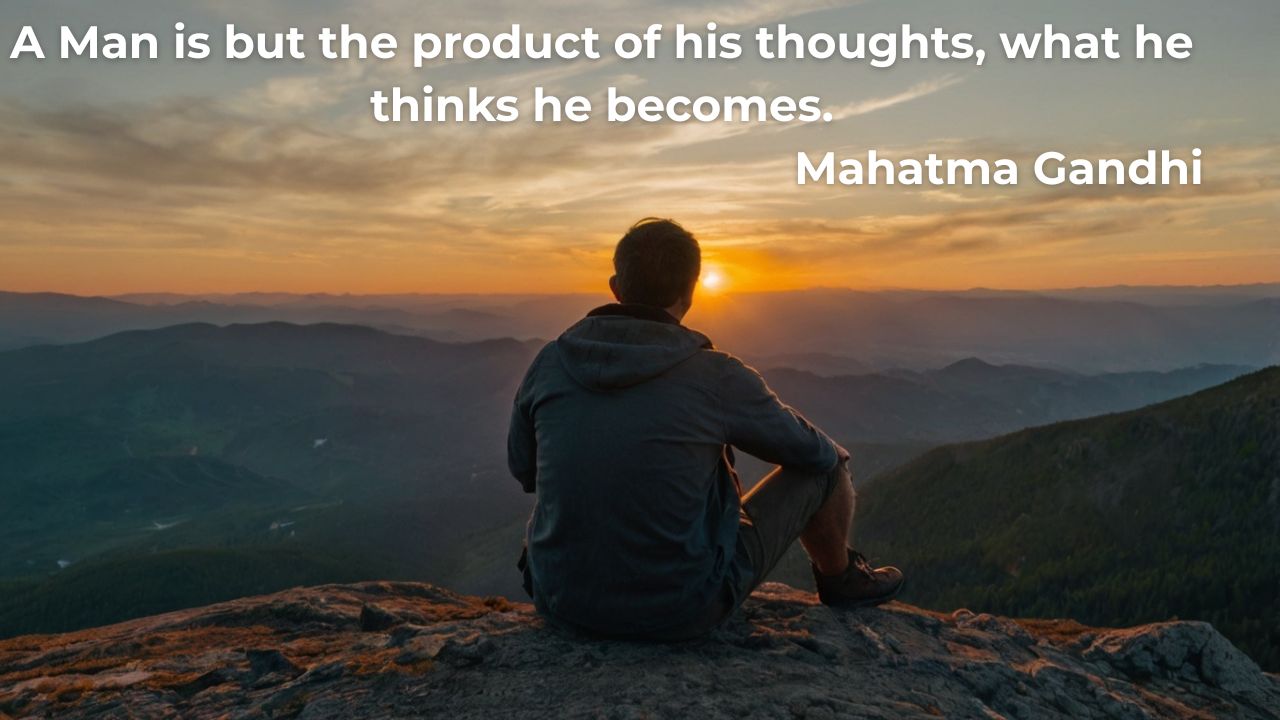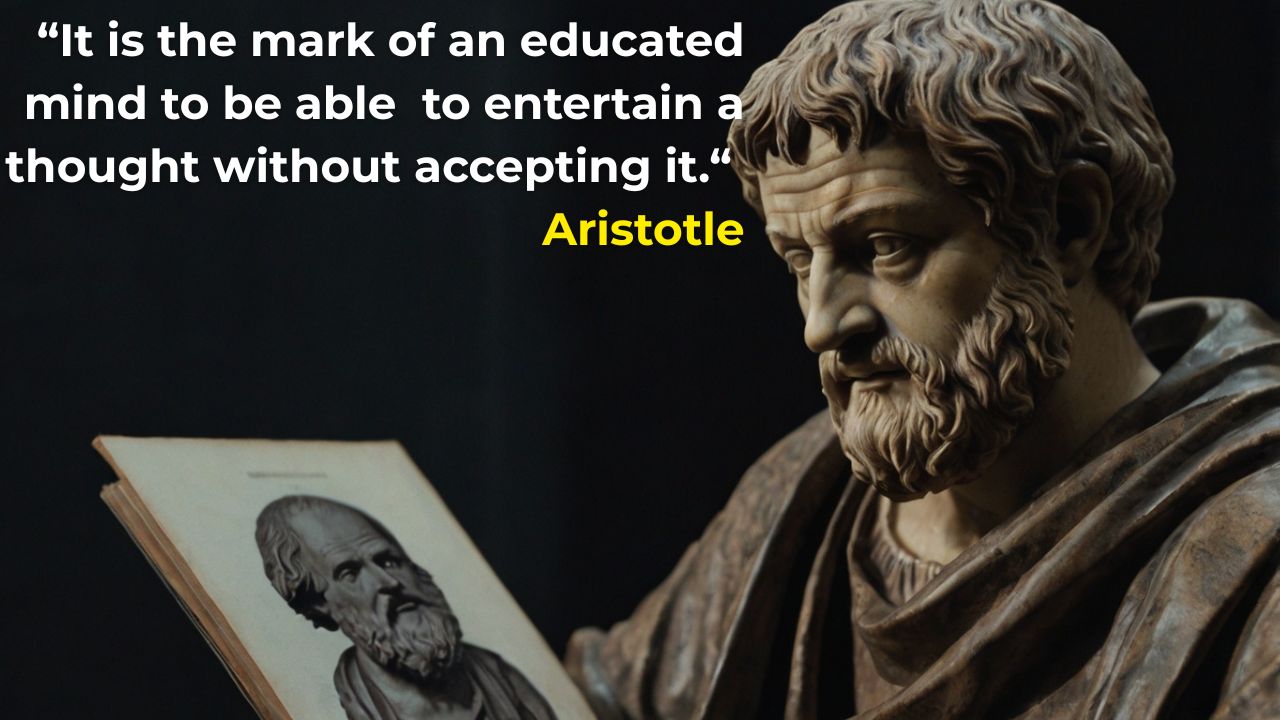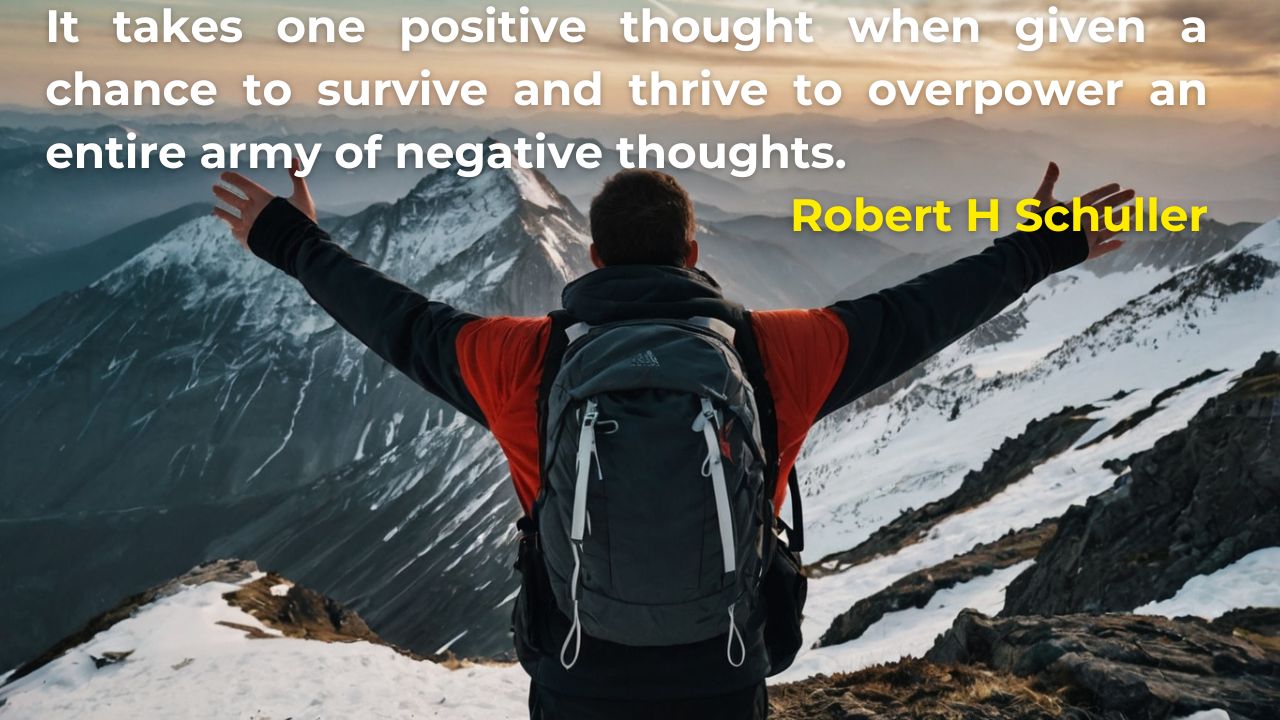Super User
Part 9: Systems Maintenance
Part 9: Systems Maintenance - Keeping Your Mental Patterns Healthy Long-Term
You've planted a beautiful garden. The seeds have sprouted, the plants are growing, and everything looks lush and healthy. But if you walk away and never tend to it again, what happens? Weeds creep in. Pests arrive. Plants get overgrown or undernourished. Within a few months, your beautiful garden can return to wild chaos.
Your mental system works exactly the same way. The positive changes you've created, the healthy patterns you've established, the new ways of thinking you've developed – they all need ongoing maintenance to stay vibrant and effective. Without conscious care, even the most beautiful mental transformations can gradually fade back to old patterns.
This isn't a failure or a sign that something is wrong with you. It's simply how living systems work. They require ongoing attention, care, and adjustment to maintain their health and continue growing. The key is learning to maintain your mental system as naturally and easily as you maintain your physical health.
Think about your car. You don't just buy it and expect it to run forever without any care. You check the oil, fill up the gas tank, get regular tune-ups, and pay attention to warning signs that something needs attention. You do this not because the car is broken, but because you want to keep it running smoothly and prevent problems before they become serious.
Your mental system deserves the same kind of thoughtful, preventive care. But most people only pay attention to their mental patterns when something goes wrong – when they're stuck, overwhelmed, or struggling. By then, small issues have often grown into bigger problems that take much more effort to resolve.
Mental system maintenance means developing the habit of checking in with your patterns regularly, making small adjustments before problems arise, and creating conditions that naturally support your system's ongoing health.
The first step is learning to read your mental dashboard – the early warning signals that tell you when your system needs attention. Just like your car has warning lights for low oil or engine problems, your mental system has indicators that show when patterns are getting unhealthy or unbalanced.
Energy levels are one of the most reliable indicators. When your mental patterns are flowing smoothly, you generally feel energized and engaged with life, even when facing challenges. When patterns start getting stuck or unhealthy, energy drops. You might feel drained by activities that usually inspire you, or find yourself procrastinating on things you normally enjoy.
Sleep quality is another powerful indicator. Healthy mental patterns typically support restful sleep, while unhealthy patterns often show up as difficulty falling asleep, staying asleep, or feeling rested when you wake up. Changes in your sleep can be an early warning that your mental system is processing stress or stuck in loops.
Your emotional baseline also reveals system health. Everyone has natural fluctuations in mood, but when you notice persistent shifts in your emotional patterns – more irritability, anxiety, sadness, or numbness than usual – your mental system is often signaling that something needs attention.
The quality of your thinking is another dashboard indicator. When your mental patterns are healthy, your thinking tends to be clear, creative, and solution-oriented. When patterns get unhealthy, thinking often becomes foggy, repetitive, or stuck in problems rather than possibilities.
Physical tension patterns also reflect mental system health. Your body and mind are part of the same system, so mental stress and stuck patterns almost always show up as physical tension, changes in posture, or alterations in breathing patterns.
Once you learn to read these indicators, you can catch issues early and make small adjustments before they become bigger problems. This is like adding oil when the light comes on rather than waiting until the engine seizes up.
Daily maintenance practices are your most powerful tool for keeping mental patterns healthy. Just like brushing your teeth or eating regular meals, small daily practices compound over time to create significant benefits.
Morning check-ins are particularly valuable. Spending just two or three minutes each morning noticing your energy level, mood, and general mental state helps you catch patterns early and adjust your day accordingly. If you wake up feeling scattered, you might choose to move more slowly and create extra structure. If you wake up feeling heavy, you might prioritize activities that naturally lift your energy.
Evening reviews serve a different maintenance function. Taking a few minutes before bed to reflect on what worked well during the day and what felt challenging helps your system process experiences and prepare for restorative sleep. This prevents the accumulation of unprocessed stress that can gradually degrade mental patterns.
Attention hygiene is another crucial daily practice. Just like you wash your hands to prevent physical illness, you need to regularly clean your mental input to prevent pattern contamination. This might mean limiting news consumption, being selective about social media, or consciously choosing uplifting content before bed.
Weekly maintenance involves stepping back to look at larger patterns. Maybe every Sunday morning, you spend 10 minutes reflecting on the week: What patterns served you well? What patterns felt stuck or unhealthy? What adjustments would support better functioning next week?
This weekly perspective helps you notice gradual shifts that might be invisible day to day. Maybe you've been gradually sleeping later and later, or slowly consuming more negative media, or incrementally reducing exercise. These slow drifts can significantly impact your mental patterns over time, but they're easily corrected when caught early.
Monthly maintenance takes an even broader view. This is when you look at seasonal patterns, life transitions, and longer-term trends in your mental system. Are there certain times of year when you typically struggle? Are there recurring patterns that show up every few months? Are there areas of your life that consistently create stress or drain energy?
Monthly reflection helps you prepare for predictable challenges and make proactive adjustments to your environment, routines, and patterns. If you know that winter tends to lower your energy, you can prepare supportive practices before the season arrives rather than waiting until you're already struggling.
Environmental maintenance is just as important as pattern maintenance. Your physical and social environment continually influences your mental patterns, so keeping your environment aligned with your intentions requires ongoing attention.
This might mean regularly decluttering your physical space, periodically evaluating your social connections, consciously curating your information diet, or adjusting your routines as your life circumstances change. Small environmental drifts can gradually undermine even the strongest mental patterns.
Relationship maintenance is particularly crucial because other people's mental patterns constantly influence yours. This doesn't mean cutting off everyone who has challenges, but it does mean being conscious about the mental patterns you're regularly exposed to and making sure you have sufficient positive influences to maintain your own healthy patterns.
Sometimes maintenance means recognizing when you need support. Just like you might call a mechanic when your car makes strange noises, there are times when your mental system needs professional attention or additional resources. Learning to recognize these times and seek help early is a sign of wisdom, not weakness.
Seasonal adjustments are a natural part of mental system maintenance. Your needs, energy levels, and optimal patterns change throughout the year. What works perfectly in summer might feel draining in winter. The social patterns that energize you in spring might feel overwhelming in fall.
Developing sensitivity to these natural rhythms and adjusting your practices accordingly helps maintain system health through all seasons. This might mean different sleep schedules, exercise routines, social activities, or creative practices at different times of year.
Life transition maintenance recognizes that major changes – job changes, relationship changes, moves, health issues, family changes – can disrupt even the strongest mental patterns. During transitions, your system needs extra support and more frequent check-ins.
This doesn't mean avoiding change or being afraid of life transitions. It means planning for the increased maintenance needs that naturally accompany change and being gentle with yourself while your system adapts to new circumstances.
Stress inoculation is another important maintenance concept. Just like vaccines expose you to small amounts of stress to build immunity, consciously exposing yourself to manageable challenges helps maintain your system's resilience and adaptability.
This might mean deliberately stepping outside your comfort zone in small ways, practicing difficult conversations before you need to have them, or regularly doing things that require you to adapt and problem-solve. When your system regularly practices handling small stresses, it stays flexible and capable of handling larger challenges when they arise.
Recovery practices are the other side of stress inoculation. Your mental system needs regular periods of rest, play, and restoration to maintain its health and prevent burnout. This isn't luxury – it's essential maintenance.
Recovery might look like daily meditation, weekly nature time, monthly creative retreats, or annual extended breaks from normal routines. The key is making recovery a regular part of your system rather than something you only do when you're exhausted.
Pattern rotation helps prevent staleness and maintain system vitality. Even positive patterns can become rigid or lose their effectiveness over time. Periodically refreshing your practices, trying new approaches, or temporarily changing routines helps keep your system flexible and engaged.
This might mean switching up your exercise routine every few months, trying different meditation techniques, or periodically rearranging your physical environment. The goal isn't constant change, but enough variation to keep your system adaptable and alive.
Remember, maintenance is not about perfection or control. It's about developing a loving, attentive relationship with your mental system – noticing its needs, responding to its signals, and providing the care it needs to thrive.
Some days your maintenance will be minimal – just a quick check-in and maybe one small adjustment. Other days, you might need more intensive care – longer practices, environmental changes, or additional support. Both are normal and healthy.
The goal is developing the sensitivity to know what your system needs and the wisdom to provide it. Over time, maintenance becomes less like work and more like a natural conversation with your own mind – an ongoing partnership that supports your continued growth and well-being.
With good maintenance practices, the positive changes you've created can not only be sustained but can continue evolving and deepening throughout your life. Your mental system can become increasingly resilient, creative, and aligned with your deepest values and aspirations.
This is the promise of systems maintenance – not just keeping what you've built, but creating the conditions for continued growth and transformation for years to come.
Part 8: The Ripple Effect - How Small Changes Transform Everything
Part 8: The Ripple Effect - How Small Changes Transform Everything
Drop a single pebble into a calm lake and watch what happens. One small stone creates rings that spread across the entire surface of the water, reaching shores you couldn't even see when you threw it. The pebble itself was tiny, but its impact touches everything.
Your mental system works exactly the same way. One small change in the right place can create ripples that transform your entire experience of life. The changes that create the most profound transformation are often so simple they seem almost trivial – until you see what they set in motion.
This is the beautiful paradox of systems thinking: the smaller and more precise your intervention, the bigger the results. While most people exhaust themselves trying to change everything at once, systems thinkers find the tiny leverage points that naturally shift everything else.
Let me tell you about Sarah, a software engineer who was stuck in a pattern of overwhelm and anxiety. She would wake up each morning already feeling behind, check her phone before getting out of bed, and immediately flood her mind with emails, news, and social media. By the time she got to work, she was already mentally scattered and reactive.
Sarah tried everything to feel calmer and more focused. She attempted meditation apps, but couldn't stick with them. She read productivity books, but the systems felt too complicated. She tried positive thinking, but it felt forced and fake. Nothing seemed to work, and she was getting more frustrated with herself.
Then she made one tiny change. Instead of checking her phone first thing in the morning, she decided to look out her bedroom window for just 30 seconds before reaching for her device. That's it. Thirty seconds of looking outside.
Here's what happened: those 30 seconds of looking at trees and sky gave her nervous system a moment to settle before the digital bombardment began. This small moment of calm made her slightly more intentional about how she used her phone. Being more intentional with her phone made her less reactive to whatever she found there. Being less reactive in the morning made her feel more centered when she got to work. Feeling more centered at work improved her decision-making throughout the day. Better decisions led to better results. Better results improved her confidence. Increased confidence reduced her anxiety. Less anxiety improved her sleep. Better sleep made her mornings easier.
One person, thirty seconds, complete transformation of her daily experience. The ripple effect from that tiny change touched every area of her life within a few months.
This is how leverage works in mental systems. You don't need to overhaul your entire life or personality. You need to find the small change that naturally creates the conditions for other positive changes to emerge.
But why do small changes work better than big ones? It's because your mental system is designed to maintain stability. When you try to make dramatic changes, your system activates all its defenses to pull you back to familiar patterns. This is why willpower approaches usually fail – you're fighting against the entire system's momentum.
Small changes slip under the radar of your system's resistance mechanisms. They don't trigger the alarms that say "danger, unfamiliar territory!" Instead, they create gentle shifts that your system can accommodate and integrate naturally.
Think about James, a teacher who struggled with negative self-talk. Every time he made a mistake, his inner voice would launch into harsh criticism. He tried to stop the negative thoughts directly, but that just created an internal battle that left him feeling worse.
Instead of fighting the criticism, James made a tiny change. Every time he noticed harsh self-talk, he would simply place his hand on his heart for three seconds. He wasn't trying to stop the thoughts or replace them with positive ones. He was just adding a small gesture of self-compassion.
This simple physical action began to interrupt the momentum of his self-criticism. The gentle touch reminded his nervous system that he was safe and cared for. Over time, the harsh voice naturally became quieter and less frequent. The three-second gesture created space for a kinder internal relationship to develop. As he became less self-critical, he took more creative risks in his teaching. Taking more risks led to better engagement with his students. Better teaching results boosted his confidence. Increased confidence made him naturally more self-compassionate.
The ripple effect from placing his hand on his heart for three seconds transformed not just his inner dialogue, but his entire professional effectiveness and personal well-being.
Sometimes the most powerful leverage points are in areas that seem completely unrelated to what you want to change. Maria wanted to be more creative in her marketing work, but she felt stuck in analytical, linear thinking patterns. Instead of focusing directly on creativity, she made a small change to her lunch routine.
Instead of eating at her desk while working, she started taking her lunch outside and eating without any devices or reading material. Just sitting, eating, and letting her mind wander for 20 minutes.
This simple change gave her overworked analytical mind a daily break. The mental rest allowed her creative faculties to recharge. The outdoor time connected her with natural rhythms and sensory input that stimulated different parts of her brain. The device-free time reduced the constant input that was overwhelming her mental system.
Within a few weeks, Maria noticed creative ideas emerging naturally throughout her day. Her marketing campaigns became more innovative and effective. Her colleagues started asking for her input on creative projects. Her reputation at work shifted from "the analytical one" to "the one with creative solutions." A 20-minute lunch change transformed her professional identity and career trajectory.
The key to finding your leverage points is understanding that your mental system is interconnected in ways you've probably never considered. Your physical habits affect your emotional patterns. Your morning routine influences your decision-making all day. Your environment shapes your thought patterns. Your breathing affects your mental clarity. Your social interactions influence your self-perception.
This interconnectedness means that sometimes the fastest way to change your thinking is to change your posture. The most effective way to improve your mood might be to reorganize your living space. The best approach to increasing confidence could be improving your sleep quality.
Look for the small changes that feel natural and sustainable rather than forced and effortful. The right leverage point often feels almost too easy, like it couldn't possibly make a real difference. That's usually a sign you've found something powerful.
Pay attention to timing, too. The same small change can have dramatically different effects depending on when you implement it. A five-minute walk might be transformative if you take it first thing in the morning, but merely pleasant if you take it in the evening. A moment of gratitude might shift your entire day if you practice it before meals, but have minimal impact if you try it randomly.
The ripple effect is also why consistency matters more than intensity. A small positive change repeated daily creates exponentially more transformation than a dramatic change attempted once. The daily repetition allows the ripples to compound, creating waves of change that reach every corner of your mental system.
But here's something important: you can't force ripple effects. You can create conditions that make them more likely, but you can't control exactly how they'll unfold. The changes that emerge from your small interventions might surprise you. They might be different from what you expected or happen in areas you weren't trying to change.
This is the beauty and mystery of working with complex systems. You plant seeds of change and trust in the system's natural intelligence to grow them in whatever direction serves your overall well-being. Sometimes the most profound transformations happen in ways you never could have planned or predicted.
David wanted to improve his relationships but felt awkward and self-conscious in social situations. Instead of working directly on social skills, he started a simple practice: every morning, he would spend two minutes genuinely appreciating something about his life – maybe his comfortable bed, his morning coffee, or the fact that his body worked well enough to get him through the day.
This small gratitude practice shifted his baseline emotional state from subtle dissatisfaction to gentle appreciation. When he felt more appreciative in general, he naturally noticed positive things about the people around him. When he noticed positive things about others, he felt more connected to them. Feeling more connected made social interactions less threatening and more enjoyable. Enjoying social interactions more made him more relaxed and authentic. Being more relaxed and authentic made him more attractive to others. His relationships improved dramatically, and he couldn't even trace it back to the original two-minute practice.
The transformation seemed to happen on its own, but it was actually the natural result of ripples spreading through his entire mental and social system.
As you think about implementing small changes in your own life, remember that the goal isn't to control the ripple effects – it's to set them in motion and then pay attention to how they unfold. Some changes will create immediate, obvious impacts. Others will work slowly and subtly, transforming your experience in ways you might not notice for weeks or months.
Trust the process. Your mental system has remarkable intelligence and wants to move toward greater health, creativity, and well-being. When you make small, consistent changes that align with this natural direction, you're not forcing transformation – you're allowing it to emerge naturally.
The ripple effect is always happening in your mental system. The question is whether the ripples are moving you toward the life you want or away from it. Every small choice, every tiny habit, every moment of attention is creating ripples that shape your future experience.
By understanding this, you become conscious about the pebbles you're dropping into the lake of your mind. You start choosing small changes that create positive ripples rather than letting random influences create chaotic waves. You become the deliberate designer of your own transformation.
And here's the most beautiful part: once you experience the power of small changes creating big results, you realize that transformation doesn't have to be hard, complicated, or overwhelming. It can be as simple as looking out a window, placing a hand on your heart, taking lunch outside, or spending two minutes in appreciation.
The life you want is often just one small, well-placed change away. The ripples are waiting to carry you there.
Part 7: When Systems Get Stuck
Part 7: When Systems Get Stuck - Breaking Mental Loops and Resetting Your Patterns
You've been applying everything you've learned about systems thinking to your mind. You've started noticing patterns, working with circular causality, and optimizing your mental environment. Things have been going well, and then suddenly – nothing. You're stuck in the same old mental loops, feeling like you're going in circles, and all your new understanding seems useless.
Welcome to one of the most important lessons in mental systems work: sometimes systems get stuck, and when they do, you need different tools than the ones that got you unstuck in the first place.
Think about a record player with a scratch on it. The needle gets caught in the groove and plays the same few seconds over and over again. No matter how good the music is on the rest of the record, you're stuck hearing the same phrase repeatedly until someone physically lifts the needle and moves it to a different spot.
Your mental patterns can get stuck the same way. You find yourself thinking the same thoughts, feeling the same emotions, and taking the same actions in an endless loop. The normal flow of your mental system gets trapped in a repetitive cycle that feeds on itself and gets stronger with each repetition.
This isn't a sign that you're doing something wrong or that systems thinking doesn't work. It's simply how complex systems behave sometimes. Even the most sophisticated systems – from computer networks to ecosystems to human minds – occasionally get caught in stuck patterns that require specific intervention to break free.
The first thing to understand about stuck systems is that they're usually created by a perfect storm of circumstances. Multiple factors align in just the right way to create a self-reinforcing loop that becomes very difficult to escape using normal methods.
Let's look at a common example: the anxiety spiral. You feel anxious about something, so you start thinking about all the things that could go wrong. The more you think about things going wrong, the more anxious you feel. The more anxious you feel, the more your mind searches for threats and problems. The more threats and problems you find, the more evidence you have that there's something to be anxious about. Around and around it goes, getting stronger and more convincing with each cycle.
What makes this particularly tricky is that each step in the loop feels logical and justified. Of course you should think about potential problems – that's just being prepared. Of course you feel anxious when you think about all those problems – that's a natural response. Of course you should keep scanning for threats when you feel anxious – that's your mind trying to protect you.
The system is stuck because each element is working exactly as it's supposed to, but the overall pattern has become self-perpetuating and disconnected from external reality. You're no longer responding to actual threats in your environment – you're responding to the internal loop itself.
Stuck systems have several common characteristics that help you recognize them. First, they feel repetitive and circular. You notice yourself thinking the same thoughts, having the same conversations with yourself, or feeling trapped in the same emotional states over and over again.
Second, they feel disproportionate to the actual situation. Your emotional response or mental preoccupation seems much bigger than the real-world circumstances that triggered it. A small worry becomes overwhelming anxiety. A minor setback becomes evidence of complete failure. A single criticism becomes proof that you're fundamentally flawed.
Third, they feel disconnected from your usual problem-solving abilities. Normally you can think your way through challenges, but in a stuck system, more thinking seems to make things worse rather than better. Your usual strategies don't work, and trying harder just feeds the loop.
Fourth, they create a sense of urgency and immediacy. Everything feels critical and important right now. The stuck pattern convinces you that you must keep thinking about it, worrying about it, or trying to solve it immediately. There's no sense of perspective or patience.
When you recognize these signs, it's time to shift from normal systems work to stuck-system interventions. The key insight is that you can't think your way out of a thinking loop. You can't solve a mental pattern using the same level of thinking that created the pattern.
This is where the physical dimension becomes crucial. Stuck mental patterns almost always have a physical component – tension in your body, changes in your breathing, alterations in your posture. Your mind and body are part of the same system, so when your mental patterns get stuck, your physical patterns usually get stuck too.
The fastest way to interrupt a stuck mental loop is often to change something physical. Stand up if you've been sitting. Go outside if you've been inside. Take five deep breaths if your breathing has become shallow. Stretch your body if you've been tense. Move your arms and legs if you've been still.
This isn't just distraction – it's system intervention. When you change your physical state, you're literally changing the conditions that support the stuck mental pattern. It's like physically lifting the needle off the scratched record and giving it a chance to find a new groove.
Sometimes the intervention needs to be more dramatic. If you're really stuck in a mental loop, you might need to completely change your environment for a while. Take a walk in nature. Call a friend whose thinking patterns you admire. Listen to music that shifts your mood. Do something with your hands that requires focus and attention.
The goal isn't to solve the problem that triggered the stuck pattern – it's to break the pattern itself so you can return to normal mental functioning. Once you're out of the loop, you can address the original issue with your full range of mental resources.
Time-based interventions are also powerful for stuck systems. Set a timer for 10 minutes and give yourself complete permission to worry, ruminate, or feel stuck during that time. When the timer goes off, consciously shift to something else. This works because it acknowledges the stuck pattern while putting clear boundaries around it.
Or try the "24-hour rule" – when you notice you're stuck in a mental loop, commit to not making any decisions or taking any action related to that issue for 24 hours. This breaks the urgency that often keeps stuck patterns alive and gives your system time to reset naturally.
Sometimes stuck patterns are maintained by hidden assumptions or beliefs that need to be questioned. You might be stuck because you're unconsciously believing that you must figure everything out right now, or that you're responsible for things you can't actually control, or that feeling bad means something terrible is happening.
When you're stuck, try asking yourself: "What would I have to believe for this pattern to make perfect sense?" Often you'll discover assumptions you didn't know you were making. Once you see these hidden beliefs, you can question whether they're actually true or helpful.
Another powerful question is: "If my best friend were stuck in this exact same pattern, what would I tell them?" This shifts you out of the internal loop and activates your normal problem-solving abilities. Usually the advice you'd give a friend is exactly what you need to hear yourself.
Environmental resets can break stuck patterns too. If you've been thinking in circles about something in your bedroom, move to the kitchen. If you've been stuck on a problem at your desk, go sit somewhere completely different. If you've been ruminating during your usual routine, deliberately break the routine.
The physical environment holds and reinforces mental patterns more than most people realize. When you change your environment, you're changing the external cues that trigger and maintain internal loops.
Social intervention is another powerful tool. Stuck patterns often thrive in isolation because there's no external perspective to interrupt the internal loop. Talking to someone – even just explaining the situation out loud – can break the pattern immediately.
You don't need to seek advice or solutions. Simply describing your stuck pattern to another person often reveals how circular and disconnected from reality it has become. The act of translating your internal experience into words forces you to organize your thoughts differently, which can naturally break the loop.
Sometimes stuck patterns are signs that your mental system is overwhelmed and needs rest rather than more intervention. If you've been pushing hard, processing a lot of change, or dealing with significant stress, getting stuck might be your system's way of saying it needs to slow down and recover.
In these cases, the best intervention is often giving yourself permission to not think about the issue for a while. Take a nap, watch something light and entertaining, do something purely for fun, or engage in any activity that gives your mental system a break from processing.
The key is learning to recognize the difference between productive mental work and stuck loops. Productive thinking moves you forward, generates new insights, or helps you feel more settled and clear. Stuck loops keep you in the same place, repeat the same thoughts, and often make you feel more agitated or confused.
When you notice you're in a loop rather than productive thinking, that's your signal to use intervention techniques rather than trying to think your way out. The faster you can recognize and interrupt stuck patterns, the less momentum they build and the easier they are to break.
Remember, getting stuck occasionally is normal and doesn't mean anything is wrong with you or your mental system. Even the most sophisticated systems get stuck sometimes. The difference between people who thrive and people who struggle isn't that thriving people never get stuck – it's that they recognize stuck patterns quickly and have effective tools for getting unstuck.
With practice, you'll develop an intuitive sense of when your mental system is flowing naturally versus when it's caught in a loop. You'll learn which intervention techniques work best for your particular patterns. And you'll discover that getting unstuck can actually leave you in a better state than before you got stuck, because breaking free from loops often reveals new possibilities and perspectives you couldn't see while you were trapped in the pattern.
The goal isn't to never get stuck – it's to get really good at getting unstuck quickly and using those experiences to understand your mental system even better.
Part 6: Your Mental Environment
Part 6: Your Mental Environment - How Everything Around You Shapes Your Thinking
You wouldn't plant a garden in toxic soil and expect beautiful flowers to grow. You wouldn't try to stay healthy while living in a polluted environment. Yet most of us try to develop positive thinking patterns while completely ignoring the mental environment we're creating around ourselves every single day.
Here's something that might surprise you: your mind doesn't exist in isolation. It's not a sealed container that only processes your internal thoughts and feelings. Your mind is constantly absorbing, processing, and responding to everything in your environment – and that environment is actively shaping your mental patterns whether you realize it or not.
Think of your mind like a garden, and everything around you as the soil, water, sunlight, and air that either nourish or poison what you're trying to grow. The people you spend time with, the spaces you live and work in, the information you consume, the sounds you hear, even the colors you see – all of these are constantly feeding into your mental system and influencing how you think, feel, and behave.
Most people focus all their energy on trying to think better thoughts while completely ignoring the fact that their environment is working against them 24 hours a day. It's like trying to swim upstream in a rushing river. Sure, you might make some progress through pure effort, but how much easier would it be if you could redirect the current to flow in your favor?
Let's start with your physical environment because it's the most obvious and often the most overlooked. The space you spend time in is constantly sending signals to your brain about what kind of thinking is appropriate and possible.
Walk into a cluttered, chaotic room and notice what happens to your mental state. Most people find their thinking becomes scattered and unfocused. The external chaos creates internal chaos. Now imagine walking into a clean, organized, beautiful space with natural light and plants. Notice how your mind automatically feels clearer, calmer, more capable.
This isn't just your imagination – it's your mental system responding to environmental cues. Your brain is constantly scanning your environment for information about safety, possibility, and what kind of behavior is expected. A messy environment signals chaos and overwhelm. An organized environment signals control and clarity.
But it goes deeper than just clean versus messy. The colors around you affect your mood and energy levels. Bright, warm colors tend to energize and stimulate, while cool, soft colors tend to calm and focus. Natural elements like plants and water features have been shown to reduce stress and improve cognitive function. Even the height of your ceiling influences whether you think in expansive, creative ways or more focused, detail-oriented ways.
The lighting in your environment dramatically affects your mental state. Harsh fluorescent lighting can create subtle stress and fatigue. Natural light supports alertness and positive mood. Warm, soft lighting encourages relaxation and reflection. Most people never think about lighting as part of their mental environment, but it's influencing their thinking patterns all day long.
Your workspace is particularly important because you spend so many hours there. Is it designed to support the kind of thinking you want to do? If you want to be creative, does your space inspire creativity with visual stimulation, flexible seating, and room to move around? If you need to focus on detailed work, does your space minimize distractions and provide clear sight lines? If you want to feel energized and motivated, does your space include elements that naturally boost your energy?
Then there's your social environment – the people you spend time with regularly. This might be the most powerful environmental factor of all because humans are incredibly social creatures whose mental patterns are constantly influenced by the people around them.
You've probably noticed that you act differently around different people. With some people, you feel more confident, creative, and optimistic. With others, you might feel drained, critical, or negative. This isn't just personality compatibility – it's your mental system adapting to different social environments.
The people you spend time with are constantly modeling ways of thinking, speaking, and being. If you're around people who complain frequently, you'll find yourself noticing more things to complain about. If you're around people who look for solutions, you'll find yourself becoming more solution-oriented. If you're around people who gossip, you'll find your mind focusing more on social drama. If you're around people who discuss ideas and possibilities, you'll find your mind becoming more expansive and creative.
This happens below the level of conscious awareness through what scientists call emotional contagion and social mirroring. You literally catch the mental patterns of the people around you, just like you might catch a cold. The difference is that most people are completely unaware this is happening.
But here's the empowering part – once you understand this, you can become intentional about your social environment. You can seek out people whose mental patterns you want to absorb. You can limit time with people whose patterns drag you down. You can even consciously model the mental patterns you want to develop by observing people who already embody them.
Your information environment is another crucial factor that most people never consider. Everything you read, watch, and listen to is feeding information into your mental system and shaping how you see the world.
If you start your day reading news that focuses on problems, conflicts, and disasters, you're programming your mind to scan for threats and difficulties. If you consume social media that makes you compare yourself to others, you're training your mind to focus on inadequacy and competition. If you watch shows that center around drama and conflict, you're teaching your brain that drama and conflict are normal and expected.
But if you start your day with inspiring content, your mind begins scanning for possibilities and opportunities. If you consume information that teaches you new skills or perspectives, you're expanding your mental models of what's possible. If you regularly engage with content that makes you laugh, think, or feel grateful, you're literally rewiring your brain toward positivity and growth.
Most people consume information passively, like mental junk food, without realizing they're creating the very mental patterns they then struggle to change. They'll spend 30 minutes scrolling through negative news and social media, then wonder why they feel anxious and overwhelmed. They'll binge-watch shows full of dysfunction and drama, then wonder why their own relationships feel more difficult.
The sounds in your environment matter too. Constant noise and chaos create mental stress, even when you think you've tuned it out. Your brain is always processing auditory information, and chaotic sounds create chaotic thinking patterns. But beautiful music, natural sounds, or even strategic silence can support focus, creativity, and calm.
Even your daily routines and rituals shape your mental environment. The way you start your morning sets the tone for your entire mental state throughout the day. The way you transition between activities affects how clearly you can think. The way you end your day influences the quality of your sleep and your mental state the next morning.
If you rush through your morning, checking emails and news before you're fully awake, you're creating a mental environment of urgency and reactivity. If you start your day with a few minutes of quiet reflection, some light movement, or reading something inspiring, you're creating a mental environment of intention and possibility.
The beautiful thing about understanding your mental environment is that you have much more control over it than you might think. You can't control everything, but you can influence far more than most people realize.
You can redesign your physical spaces to support the mental states you want to cultivate. You can be more intentional about who you spend time with and how those interactions affect your thinking patterns. You can curate your information diet like you would curate your food diet. You can create daily routines that naturally support positive mental patterns.
Small changes in your environment can create big changes in your mental patterns because environmental factors compound over time. Spending just 10 minutes each morning in a beautiful, organized space with natural light might seem insignificant, but over weeks and months, it's training your brain to expect and create more beauty and order in your life.
Surrounding yourself with one more person who thinks positively might seem like a small shift, but over time, their mental patterns will influence yours in countless subtle ways. Replacing 15 minutes of negative news with inspiring content might seem trivial, but over a year, you're literally rewiring thousands of neural pathways.
The key is to think systematically about your mental environment. Look at all the different factors – physical space, social connections, information diet, daily routines – and ask yourself: Is this supporting the mental patterns I want to develop, or is it working against them?
You don't have to change everything at once. Start with one environmental factor that feels manageable and appealing. Maybe it's reorganizing your workspace, or finding one new person whose thinking patterns you admire, or replacing one negative information source with something more constructive.
As you make these changes, pay attention to how they affect your mental patterns over time. Notice how a cleaner space affects your clarity. Notice how time with positive people influences your mood and outlook. Notice how consuming inspiring content changes what you think about throughout the day.
Remember, you're not trying to create a perfect environment – you're trying to create an environment that naturally supports your mental growth rather than working against it. You're learning to work with your mind's natural tendency to be influenced by its surroundings.
When you align your environment with your intentions, transformation becomes much easier and more sustainable. Instead of fighting against environmental influences, you're designing them to work in your favor. Instead of swimming upstream, you're redirecting the current to carry you where you want to go.
Your mental environment is one of the most powerful leverage points in your entire mental system. Small, intentional changes in what surrounds you can create profound shifts in how you think, feel, and experience life. And the best part is, these changes often feel good immediately while creating lasting transformation over time.
Part 5: Beyond Simple Cause And Effect
Part 5: Beyond Simple Cause and Effect - Circular Causality and Feedback Mastery.
Remember when you were a kid and believed that if you pressed the elevator button harder, the elevator would come faster? Or that yelling at your computer would make it work better? We laugh at this now, but most of us still think about our minds using the same simple cause-and-effect logic: push harder, get better results.
We've been taught that life works like a straight line. Action A leads to Result B. You think positive thoughts, you feel better. You work hard, you succeed. You eat healthy, you lose weight. Simple, predictable, logical. But here's the thing – your mind doesn't actually work this way, and neither does the world around you.
Real life works more like a spider web than a straight line. Touch one part of the web, and vibrations ripple through the entire structure. Change one thing, and everything else shifts in response. Your thoughts don't just create your feelings – your feelings also create your thoughts. Your actions don't just produce results – your results shape your future actions. Everything is connected to everything else in endless circles of influence.
This is what we call circular causality, and once you understand it, you'll never see your mental patterns the same way again.
Think about confidence for a moment. Most people believe confidence works in a straight line: first you become confident, then you take action, then you get good results. But watch what actually happens. When you feel confident, you stand taller, speak clearer, and take more risks. When you take more risks, you get more opportunities. When you get more opportunities, you achieve more successes. And when you achieve more successes, you feel more confident.
But here's where it gets interesting – it also works in reverse. When you stand taller and speak clearer, even if you don't feel confident, you start to feel more confident. When you take small risks, even tiny ones, you build evidence that you're capable of handling challenges. The confidence doesn't just cause the behavior – the behavior also causes the confidence.
This is a circular loop where each element feeds into the next, which feeds back into the first. There's no clear beginning or end, no single cause or effect. Everything is both cause and effect simultaneously.
Your mind is full of these circular patterns, and most of them are completely invisible to you. You live inside them without realizing they exist. But once you start noticing them, you'll see them everywhere.
Take worry, for example. You worry about something, which makes you feel anxious. When you feel anxious, you start imagining all the things that could go wrong. The more you imagine things going wrong, the more worried you become. The more worried you become, the more anxious you feel. Around and around it goes, feeding on itself and getting stronger with each cycle.
Or consider how you talk to yourself. When you make a mistake, you might think "I'm so stupid." This thought makes you feel bad about yourself. When you feel bad about yourself, you're more likely to notice your mistakes and less likely to notice your successes. When you focus on your mistakes, you have more evidence that you're stupid. This confirms your original thought, making you more likely to think it again next time.
These aren't just random thoughts and feelings bouncing around in your head – they're organized patterns that repeat themselves predictably. And the beautiful thing about patterns is that once you can see them, you can work with them.
Let's look at how this shows up in everyday life. Have you ever noticed that some days everything seems to go right, while other days everything goes wrong? This isn't just luck or coincidence – it's circular causality in action.
On a good day, you wake up feeling positive. Because you feel positive, you're more likely to smile at people, which makes them respond warmly to you. Their warm responses make you feel even more positive. You approach challenges with optimism, which helps you find creative solutions. The creative solutions work, which proves to you that you're capable, which makes you feel even more positive.
On a bad day, the same process works in reverse. You wake up feeling off. Because you feel off, you're less likely to make eye contact or smile. People respond with less warmth, which confirms that the day isn't going well. You approach challenges expecting problems, so you're more likely to find them. The problems you find prove that the day really is bad, which makes you feel even worse.
The same person, the same life circumstances, but completely different experiences created by these circular patterns.
The key insight is that you can interrupt these patterns at any point in the circle. You don't have to wait until you feel confident to act confident – acting confident will help you feel confident. You don't have to wait until you feel motivated to take action – taking action will help you feel motivated. You don't have to wait until you stop worrying to feel calm – acting calm will help you stop worrying.
This is why small changes can create big results. When you shift one element in a circular pattern, the shift travels around the entire circle, amplifying as it goes. Change your posture, and your thoughts shift. Change your breathing, and your emotions shift. Change your environment, and your mental state shifts.
But timing matters in these patterns. Some circles complete themselves quickly – your posture affects your mood within seconds. Other circles take much longer – your daily habits affect your life satisfaction over months or years. Understanding these different timeframes helps you know where to look for results and how long to stick with changes.
The delayed circles are often the most powerful and the most invisible. You might change your morning routine and not see any difference for weeks, then suddenly notice that you've been more creative, more energetic, and more optimistic. The change was working all along, but the full circle took time to complete.
This is why so many people give up on positive changes too quickly. They're looking for straight-line results in a circular-pattern world. They try meditation for a week and expect to feel completely different. They eat healthy for a month and expect dramatic changes. They practice a new skill for a few sessions and expect mastery.
But circular patterns build momentum gradually. Each time around the circle, the pattern gets a little stronger. The confidence loop becomes more automatic. The worry loop becomes easier to interrupt. The positive-day pattern becomes your default instead of the exception.
Once you understand this, you can become strategic about which patterns you want to strengthen and which ones you want to weaken. Instead of fighting against negative patterns with willpower, you can gradually starve them by consistently choosing different responses at key points in the circle.
For instance, if you're caught in a self-criticism pattern, you don't have to eliminate all negative thoughts about yourself. You can focus on interrupting the pattern at the point where you typically start imagining all your failures. Or you can interrupt it at the point where you usually confirm that the criticism is true. One small, consistent interruption can gradually weaken the entire circular pattern.
Similarly, you can deliberately strengthen positive patterns by being more conscious about completing the beneficial circles. When something goes well, take a moment to really notice and appreciate it. This completes the positive circle and makes it more likely to repeat. When you handle a challenge successfully, acknowledge your capability. This strengthens the confidence circle.
The most sophisticated approach is to design your environment and routines to naturally support the patterns you want and make it harder for unwanted patterns to complete themselves. If you tend to worry late at night, you might establish an evening routine that interrupts the worry circle before it gains momentum. If you want to strengthen creative patterns, you might set up your physical space to naturally trigger creative thinking.
Remember, you're not trying to control every element in these circular patterns – that's impossible and exhausting. You're looking for the leverage points where small, consistent changes can redirect the entire pattern over time.
The patterns in your mind aren't fixed or permanent. They're dynamic, living systems that are constantly being reinforced or weakened by your choices. Every time you complete a circle, you make that pattern more likely to happen again. Every time you interrupt a circle, you make that pattern a little weaker.
This understanding transforms how you approach personal change. Instead of trying to force new thoughts or eliminate unwanted emotions, you start working with the circular intelligence of your mental patterns. You become a pattern designer rather than a pattern victim.
And the beautiful thing is that once you establish a few strong positive patterns, they start to support each other. The confidence pattern makes the creativity pattern easier. The gratitude pattern strengthens the optimism pattern. The self-care pattern supports the energy pattern. Your entire mental ecosystem begins to organize around growth and wellbeing rather than stress and limitation.
This is the power of understanding circular causality in your mental world. You stop trying to push the river in a straight line and start learning to navigate the natural currents that are already flowing. You work with your mind's patterns rather than against them, and everything becomes easier, more natural, and more sustainable.
What Is Systems Thinking and How You Can Apply It To Thought
What is Systems Thinking and How You Can Apply It to Thought
Imagine you're trying to understand why your car won't start. You could focus on individual parts – maybe it's the battery, or the spark plugs, or the fuel pump. But a mechanic doesn't just look at isolated components. They understand that your car is a system where the electrical system connects to the fuel system, which works with the engine, which relies on the cooling system. Everything is interconnected, and the real answers often lie in understanding these relationships.
This is systems thinking – the ability to see the big picture, understand how parts work together, and recognize that the whole is often greater than the sum of its parts. It's a way of looking at the world that focuses on connections, patterns, and relationships rather than just individual elements.
In the business world, systems thinking has revolutionized how we understand organizations. Instead of seeing departments as separate units, successful companies recognize the intricate web of relationships between marketing, sales, production, customer service, and finance. When one department changes, it ripples through the entire organization.
In nature, ecosystems demonstrate perfect systems thinking. A forest isn't just a collection of trees. It's a complex network where trees communicate through underground fungal networks, sharing nutrients and information. The health of the soil affects the trees, which influences the wildlife, which impacts pollination, which affects plant reproduction. Remove one element, and the entire system adapts and changes.
But here's where it gets really interesting for you personally – your mind operates exactly like these complex systems. Your thoughts, emotions, beliefs, habits, and behaviors aren't isolated events happening randomly in your head. They're all interconnected parts of a sophisticated mental system that's constantly influencing itself through feedback loops, patterns, and relationships you've probably never noticed.
Most of us were taught to think about our minds in a very linear way. We have a problem, we think about it, we come up with a solution. We feel an emotion, we either accept it or try to change it. We want to develop a new habit, so we use willpower to force ourselves to do it. But this approach treats each mental event as a separate, isolated incident.
Systems thinking reveals a completely different reality. Your thoughts influence your emotions, which affect your physical state, which impacts your decision-making, which shapes your actions, which create your results, which influence your beliefs about what's possible, which affect your future thoughts. It's all one interconnected system.
Let's take a practical example. Say you want to become more confident. Linear thinking might tell you to just "think more positive thoughts" or "fake it till you make it." But systems thinking reveals that confidence exists within a web of relationships. Your confidence connects to your past experiences, your current physical posture, your breathing patterns, the people you spend time with, your sleep quality, your exercise habits, your self-talk patterns, and dozens of other factors.
When you understand this, you realize you don't have to attack confidence directly. You might discover that improving your posture naturally shifts your mental state, which makes you feel more capable, which encourages you to take on new challenges, which builds real competence, which genuinely increases confidence. One small change in the system creates a cascade of positive effects.
This is the power of leverage in mental systems. Just like a small rudder can steer a massive ship, small changes in the right places in your mental system can create profound transformations. But you have to understand the system to find these leverage points.
Your belief system operates as a network too. Every belief you hold is connected to and supported by other beliefs. This is why it's so hard to change beliefs by arguing with them directly. When you try to force a belief change, you're fighting against an entire network of supporting beliefs, experiences, and mental habits.
But when you understand your beliefs as a system, you can find the keystone beliefs – the ones that, when they shift, allow many other beliefs to reorganize naturally. Sometimes changing your belief about your ability to learn new things can transform your beliefs about career possibilities, relationship potential, and personal growth all at once.
Your daily mental patterns reveal system dynamics too. Notice how certain thoughts tend to lead to other thoughts. Observe how specific emotions create predictable thought patterns. Pay attention to how your physical environment affects your mental clarity. These aren't random connections – they're system relationships that you can learn to work with consciously.
The beautiful thing about applying systems thinking to your own mind is that it makes change both easier and more sustainable. Instead of fighting against your mental patterns with willpower, you learn to design conditions that naturally support the changes you want. Instead of trying to control every thought and emotion, you learn to influence the underlying structures that generate thoughts and emotions.
For instance, if you struggle with negative thinking, systems thinking might lead you to examine your information diet. What news sources do you consume? What social media feeds do you follow? What conversations do you regularly engage in? These environmental inputs are part of your mental system, and changing them can naturally shift your thought patterns without any direct effort to "think more positively."
Or if you want to be more creative, instead of just trying to force creative thoughts, you might look at the system conditions that support creativity. When do your best ideas usually come? What environments stimulate your imagination? How does your physical state affect your creative capacity? What kinds of inputs fuel your creative thinking? By optimizing these system conditions, creativity begins to emerge naturally.
The feedback loops in your mental system are particularly powerful once you become aware of them. Confidence creates action, which creates results, which builds more confidence. But it also works in reverse – doubt creates hesitation, which creates poor results, which builds more doubt. Understanding these loops helps you consciously intervene to shift their direction.
One of the most practical applications is recognizing that your attention is a system designer. Where you consistently focus your attention literally shapes your mental system over time. If you habitually focus on problems, your mind becomes very good at finding problems. If you train your attention on possibilities, your mind becomes skilled at recognizing opportunities. Same mental hardware, completely different mental software.
This doesn't mean ignoring real problems or forcing false positivity. It means understanding that your attention patterns are actively shaping your mental system's capabilities and tendencies. You can become more intentional about where you direct this powerful system-shaping force.
Starting to apply systems thinking to your thought doesn't require any special techniques or complicated practices. It begins with simply shifting your perspective from isolated events to interconnected patterns. Instead of asking "How do I fix this thought?" you start asking "What conditions are creating this pattern of thinking?" Instead of "How do I force this change?" you ask "What would naturally support this change?"
You begin to notice the relationships between different aspects of your experience. How does your morning routine affect your mental state throughout the day? How do your relationships influence your self-talk? How does your physical environment impact your thinking quality? How do your entertainment choices affect your overall mental patterns?
This awareness alone begins to transform your relationship with your own mind. You stop being a victim of random mental events and start becoming a conscious participant in your mental system's ongoing evolution. You realize that you're not just experiencing thoughts and emotions – you're part of a dynamic system that's constantly organizing and reorganizing itself based on countless influences, many of which you can consciously shape.
The journey of applying systems thinking to thought is ongoing and endlessly fascinating. Your mental system is incredibly sophisticated, and understanding it more deeply is a lifelong exploration. But even beginning to see these systemic relationships will fundamentally change how you approach personal growth, problem-solving, and daily living.
You'll stop trying to force change through willpower alone and start creating conditions that make positive change inevitable. You'll begin working with your mind's natural intelligence rather than against it. And you'll discover that sustainable transformation isn't about controlling every aspect of your mental experience – it's about understanding and partnering with the remarkable system that is your consciousness.
Part 4: Advanced Applications
Part 4: Advanced Applications - Designing Mental Ecosystems and Multi-Level Integration
You've journeyed from seeing your mind as a simple machine to understanding it as a dynamic, evolving system. Now we enter the realm of advanced application – where you become the conscious architect of your own mental ecosystem, working simultaneously across multiple levels of organization to create coherent, purposeful transformation.
At this level, systems thinking becomes an art form. You're no longer just understanding your mental system – you're actively designing it. Like an ecosystem designer who considers soil health, water cycles, plant relationships, and animal habitats as interconnected elements of a thriving whole, you begin to consider your thoughts, emotions, beliefs, habits, and environments as elements in a carefully orchestrated mental ecosystem.
Mental ecosystem design starts with understanding that your mind doesn't exist in isolation. It's embedded within larger systems – your relationships, your physical environment, your cultural context, your work situation, your daily routines. These outer systems profoundly influence your inner system, and vice versa. Advanced systems thinking means working with all these levels simultaneously.
Consider your physical environment as part of your mental ecosystem. The lighting in your workspace affects your cognitive performance. The organization of your living space influences your mental clarity. The natural elements you're exposed to impact your stress levels and creativity. An advanced systems thinker doesn't just try to think better thoughts – they design environments that naturally promote the kinds of thinking they want to cultivate.
Your social environment is equally crucial. The people you interact with regularly become part of your extended mental system. Their ways of thinking, their emotional patterns, their beliefs and values all influence your own mental ecosystem through countless micro-interactions. This doesn't mean you should only surround yourself with people who think exactly like you – diversity is essential for a healthy ecosystem. But it does mean being intentional about the quality and nature of your social inputs.
Information architecture is another critical element. In our hyperconnected world, your mind is constantly processing information streams from news, social media, books, podcasts, conversations, and countless other sources. An advanced systems approach means designing your information diet as carefully as a nutritionist designs a physical diet. What information feeds your growth? What information creates stress or confusion? How can you structure your information consumption to support your system's evolution rather than overwhelm it?
This leads us to one of the most sophisticated aspects of mental systems design: working with multiple timescales simultaneously. Your mental ecosystem operates on many different temporal levels – from split-second attention patterns to decade-spanning life trajectories. Advanced application means creating coherence across all these timescales.
Your moment-to-moment awareness practices influence your daily mental habits. Your daily habits shape your weekly and monthly patterns. Your longer-term patterns contribute to annual cycles of growth and change. Your yearly developments accumulate into the multi-decade arc of your life's development. An advanced systems thinker learns to work consciously at all these levels, ensuring that actions at each scale support and enhance the others.
Temporal leverage becomes particularly important here. Some interventions have immediate effects but fade quickly. Others take time to manifest but create lasting change. The most sophisticated approach involves designing cascading interventions – immediate actions that set in motion longer-term processes, which in turn create sustainable patterns that support continued evolution.
Meta-cognition – thinking about thinking – becomes a central skill in advanced systems work. You develop the ability to observe your mental system from multiple perspectives simultaneously. You can notice your thoughts while also noticing the patterns those thoughts follow while also noticing the environmental and internal factors that influence those patterns. This multi-level awareness allows for precision interventions that would be impossible from a single perspective.
One of the most powerful advanced techniques is what we might call "system state management." Just as a conductor can sense and influence the overall state of an orchestra, you learn to sense and influence the overall state of your mental system. Sometimes your system needs more energy and activation. Sometimes it needs calming and integration. Sometimes it needs challenge and growth. Sometimes it needs rest and recovery.
Advanced practitioners develop an intuitive sense of what their system needs in any given moment and how to provide it. This might involve adjusting breathing patterns to shift physiological state, changing physical position to affect mental perspective, seeking specific types of input to stimulate creativity, or creating space for integration and processing.
The concept of "cognitive load balancing" becomes crucial at this level. Your mental system has limited processing capacity at any given time. Advanced systems thinking means being strategic about how you allocate this capacity. Instead of trying to optimize everything simultaneously, you learn to focus your optimization efforts where they'll have the greatest systemic impact.
This often means working with what we might call "keystone habits" – practices that, when established, naturally support the development of other positive patterns throughout your system. Exercise might be a keystone habit that improves sleep, which enhances cognitive function, which supports better decision-making, which leads to improved relationships and work performance. One well-chosen intervention creates positive ripples throughout the entire system.
Integration across different modes of processing becomes another advanced skill. Your mental system includes logical, analytical thinking, but also intuitive, emotional, creative, and somatic ways of processing information. Most people develop one or two of these modes well while neglecting others. Advanced systems work means developing and integrating all modes, creating a richer, more flexible, and more capable overall system.
This integration often involves what we might call "cross-modal learning" – using insights from one mode to enhance others. Emotional intelligence can inform logical decision-making. Analytical skills can support creative processes. Intuitive insights can guide strategic planning. When all modes are developed and working together, the system's capabilities become far greater than the sum of its parts.
Perhaps the most sophisticated aspect of advanced systems work is learning to work with paradox and complexity without trying to resolve them prematurely. Advanced systems often exhibit apparently contradictory properties simultaneously. You might need to be both disciplined and flexible, both focused and open, both confident and humble. Instead of seeing these as problems to be solved, you learn to hold them as dynamic tensions that generate creativity and growth.
This comfort with paradox extends to the change process itself. You simultaneously accept your system as it is while working to evolve it. You honor its current configuration while gently encouraging new possibilities. You work with its natural intelligence while providing conscious guidance. These apparently contradictory approaches actually work together to create the conditions for elegant, sustainable transformation.
The ultimate goal of advanced systems thinking isn't to create a perfect mental system – it's to create a system that's continuously learning, adapting, and evolving in alignment with your deepest values and highest aspirations. It's about becoming a conscious participant in your own mental evolution rather than a passive recipient of whatever patterns happen to emerge.
This level of work requires patience, humility, and a willingness to engage with complexity. But the rewards are extraordinary. You begin to experience your mind not as something you have, but as something you are consciously co-creating moment by moment. You develop an intimate partnership with your own consciousness, working together to create experiences and capabilities that neither could achieve alone.
As you continue this journey, remember that mastery is not a destination but a quality of engagement. Every moment offers new opportunities to apply systems thinking to your mental experience. Every challenge becomes a chance to refine your understanding. Every success reveals new possibilities for growth.
Your mind is perhaps the most sophisticated system you'll ever have the privilege to work with. Treat it with the respect, curiosity, and care it deserves. And trust in its remarkable capacity to evolve in directions you can barely imagine when you learn to work with its deepest intelligence rather than against it.
The future of human development lies not in controlling our minds, but in learning to dance with them as partners in the ongoing creation of consciousness itself. This is the ultimate application of systems thinking in the realm of thought – not just understanding the system, but becoming a conscious participant in its endless evolution.
Part 3: The Dynamic Mind
Part 3: The Dynamic Mind - Adaptation, Evolution, and Emergent Properties
Your mental system isn't static. It's not a fixed machine that processes information the same way forever. It's a living, dynamic system that constantly adapts, evolves, and surprises you with emergent properties that can't be predicted from its individual components. Understanding this dynamic nature is where systems thinking becomes truly powerful.
Think about how your mind has changed over the years. The way you process information today is dramatically different from how you processed it a decade ago. Your values have evolved. Your problem-solving strategies have become more sophisticated. Your emotional responses have matured. This isn't just learning – it's systematic evolution.
Mental systems have the remarkable property of self-organization. Without any central controller, they spontaneously develop new structures, patterns, and capabilities. This is emergence – the phenomenon where the whole becomes greater than the sum of its parts and exhibits properties that none of the individual components possess.
Consider how insights emerge. You can't force them, you can't schedule them, and you can't predict exactly when they'll arrive. Yet they consistently emerge from the complex interactions between your conscious thinking, unconscious processing, past experiences, and environmental inputs. The insight itself is an emergent property of the system – something genuinely new that arises from the system's dynamics.
Your personality is another emergent property. There's no single location in your brain labeled "personality," yet a consistent pattern of thinking, feeling, and behaving emerges from the countless interactions between your neural networks, memories, beliefs, and experiences. This emergent personality then influences every aspect of how your mental system operates, creating feedback loops that further shape its development.
The dynamic nature of mental systems means they're constantly adapting to their environment. Your mind is always learning, always adjusting, always optimizing for what it perceives as important. But here's the crucial insight: your mental system adapts to what you expose it to and what you reinforce, not necessarily to what's best for you.
If you consistently expose your mind to stressful, negative, or chaotic inputs, it will adapt to
process and expect stress, negativity, and chaos. If you expose it to beauty, growth, and possibility, it will adapt to recognize and create more of those experiences. Your mental system is neutral – it simply becomes very good at whatever you practice, consciously or unconsciously.
This adaptation happens at multiple levels simultaneously. Your neural pathways physically change based on repeated patterns of thought and attention. Your emotional responses adapt to become more or less sensitive based on your experiences. Your belief systems evolve to accommodate new information or to protect existing worldviews. Your behavioral patterns adjust to what your environment rewards or punishes.
The beautiful aspect of adaptation is that it's always happening. You can't turn it off, which means you can't waste any experience. Even apparent setbacks and challenges contribute to your system's evolution, often in ways that only become clear much later. Your mind is constantly extracting patterns, updating models, and refining strategies based on every experience you have.
But adaptation can also create challenges. Sometimes your mental system adapts to past environments that no longer exist. The hypervigilance that served you in a dangerous situation might persist long after the danger has passed. The emotional walls that protected you in childhood might now prevent intimate connections in adulthood. Understanding adaptation helps you recognize when your system is running outdated programming.
Evolution in mental systems involves periodic reorganizations – moments when the entire system restructures itself around new organizing principles. These are often experienced as breakthrough moments, paradigm shifts, or fundamental changes in how you see yourself and the world.
Unlike biological evolution, mental evolution can happen rapidly and can be consciously influenced. You can create conditions that encourage your system to evolve in desired directions. You can expose yourself to new environments, challenge existing assumptions, seek out different perspectives, and practice new patterns of thinking and being.
One of the most profound aspects of mental evolution is that it's often discontinuous. Small, gradual changes accumulate until they reach a tipping point, and then the system rapidly reorganizes around a new configuration. This is why personal transformation often feels like it happens suddenly, even though it's usually the result of many small changes building up over time.
The emergence of new capabilities is perhaps the most exciting aspect of dynamic mental systems. When you practice meditation consistently, you don't just get better at sitting quietly – new qualities of awareness emerge that transform how you experience everything. When you develop expertise in a field, you don't just accumulate knowledge – new forms of intuition and pattern recognition emerge that feel almost magical.
These emergent capabilities can't be forced or directly pursued. They arise naturally from the complex interactions within a well-developed system. You can create conditions that make emergence more likely, but you can't control exactly what emerges or when.
Resilience is an emergent property that's particularly valuable. A resilient mental system isn't one that never gets disturbed – it's one that can maintain core functions while adapting to challenges and can reorganize itself when necessary. Resilience emerges from diversity, flexibility, redundancy, and the ability to operate at multiple levels simultaneously.
Creativity is another emergent property that arises from the dynamic interplay between structure and flexibility, knowledge and openness, focus and relaxation. You can't manufacture creativity directly, but you can create the conditions within your mental system that allow it to emerge naturally.
Understanding the dynamic nature of mental systems has profound implications for how you approach personal development. Instead of trying to control every aspect of your mental processes, you learn to work with the system's natural tendencies toward adaptation and evolution. You become a gardener rather than a mechanic – creating conditions for growth rather than forcing predetermined outcomes.
This means paying attention to what you're feeding your system. The information you consume, the environments you inhabit, the people you interact with, the practices you engage in – all of these become inputs that shape your system's evolution. You begin to curate your mental diet as carefully as you might curate your physical diet.
It also means developing patience with the adaptive process. Evolution takes time, and forcing it often backfires. But when you align yourself with your system's natural intelligence and create supportive conditions, transformation becomes an organic, sustainable process rather than a constant struggle.
In our final exploration, we'll look at advanced applications – how to use systems thinking to design your mental environment, influence your system's evolution, and work with multiple levels of organization simultaneously. But for now, begin to notice the dynamic aspects of your own mental system. Observe how it adapts, watch for emergent properties, and appreciate the remarkable intelligence of this living system you inhabit.
Part 2: Mapping Your Mental Architecture
Part 2: Mapping Your Mental Architecture - Identifying Patterns, Loops, and Leverage Points
Now that you've begun to see your mind as a system rather than a collection of isolated thoughts, it's time to become a cartographer of your own consciousness. Just as explorers once mapped uncharted territories, you're about to map the hidden landscape of your mental architecture.
Every master of their craft understands the tools of their trade. For systems thinking in the realm of thought, your primary tools are pattern recognition, feedback loop identification, and leverage point detection. These aren't abstract concepts – they're practical skills that will fundamentally change how you understand and work with your own mind.
Let's start with patterns. Your mind is a pattern-making machine, constantly creating templates from your experiences and using them to navigate new situations. But most of these patterns operate below conscious awareness. Systems thinking brings them into the light.
Mental patterns show up everywhere. Notice how certain situations consistently trigger similar thoughts. Observe how specific emotions always seem to follow particular beliefs. Pay attention to how your energy levels throughout the day affect the quality of your thinking. These aren't random occurrences – they're systematic patterns revealing the underlying structure of your mental system.
Consider your problem-solving approach. Do you typically rush toward solutions, or do you naturally slow down to understand the situation first? Do you seek input from others, or do you prefer to work things through internally? These preferences aren't just personality traits – they're patterns that create predictable outcomes and reveal the deeper architecture of how your mind processes information.
Your emotional patterns are equally revealing. Some people have emotional systems that ramp up quickly and calm down slowly. Others maintain steady states until specific triggers create sudden shifts. Neither is right or wrong, but understanding your emotional patterns allows you to work with your system's natural rhythms rather than against them.
Feedback loops are where the real magic happens. These are the circular patterns where outputs become inputs, creating self-reinforcing or self-correcting cycles. Positive feedback loops amplify patterns, while negative feedback loops create balance and stability.
Think about confidence as a system. When you feel confident, you take more action. When you take more action, you get more results. When you get more results, you feel more confident. This is a positive feedback loop that can create an upward spiral of growth and achievement. But it can also work in reverse. When confidence drops, action decreases, results diminish, and confidence drops further.
The key insight is that feedback loops have momentum. Once they're moving in a direction, they tend to continue in that direction until something intervenes. Understanding this allows you to consciously create interventions that redirect the loop's momentum.
Mental feedback loops operate at different speeds. Some complete their cycle in minutes – like the loop between your posture, your breathing, and your mental state. Others take days, weeks, or even years to complete. The longer loops are often invisible because we don't naturally think in such extended timeframes, but they're often the most powerful shapers of our experience.
Your beliefs and experiences create particularly important feedback loops. Your beliefs shape what you notice, what you notice influences what you experience, and what you experience reinforces your beliefs. This is why two people can live in the same world but have completely different realities – they're operating from different belief systems that create different feedback loops with their environment.
Now we come to leverage points – the places in a system where small changes can produce big results. In mechanical systems, leverage points are often obvious. But in mental systems, they're usually hidden and counterintuitive.
The most powerful leverage points in mental systems are often found in the underlying structures rather than the surface-level symptoms. Instead of trying to force yourself to think more positively, you might discover that the leverage point is in changing your sleep schedule, which affects your neurochemistry, which naturally shifts your thought patterns.
Sometimes the leverage point is in questioning a fundamental assumption you didn't even know you held. Other times it's in changing a single daily habit that ripples through multiple other patterns. The art is learning to sense where these points might be hiding.
Your attention itself is a crucial leverage point. Where you consistently focus your attention shapes the entire system. If you habitually focus on problems, your mind becomes a problem-detection system. If you train your attention on possibilities, your mind becomes a possibility-generation system. The same mental hardware, completely different software.
Language is another often-overlooked leverage point. The words you use to describe your experiences literally shape what those experiences become. Changing "I have to" to "I choose to" can shift an entire motivational system. Replacing "I can't" with "I haven't learned how yet" transforms a fixed mindset into a growth mindset.
Timing is a leverage point too. Your mental system has natural rhythms and cycles. Some times are naturally better for analytical thinking, others for creative thinking, others for reflection and integration. Working with these rhythms rather than against them multiplies your effectiveness.
The relationships between different parts of your mental system are where some of the most powerful leverage points hide. Instead of trying to eliminate negative emotions, you might discover the leverage point in changing how different parts of your mind relate to each other – perhaps developing a curious, compassionate relationship with your anxiety rather than a combative one.
As you begin mapping your own mental architecture, remember that this is an ongoing process, not a one-time analysis. Your patterns will shift as you grow and change. New feedback loops will emerge as your awareness expands. And you'll discover new leverage points as you develop more sophisticated ways of working with your mental system.
The goal isn't to create a perfect map – it's to develop the skill of ongoing navigation. You're learning to become fluent in the language of your own mind, to recognize the deeper structures that shape your experience, and to find the elegant points of intervention that allow natural transformation rather than forced change.
In our next exploration, we'll dive into the dynamic nature of mental systems – how they adapt, evolve, and reorganize themselves over time. But for now, begin your mapping process. Start noticing your patterns, identifying your feedback loops, and sensing where your leverage points might be hiding.
- Audio Articles
- Audio Articles 1
- Audio Articles 2
- Audio Articles 3
- Audio Articles 4
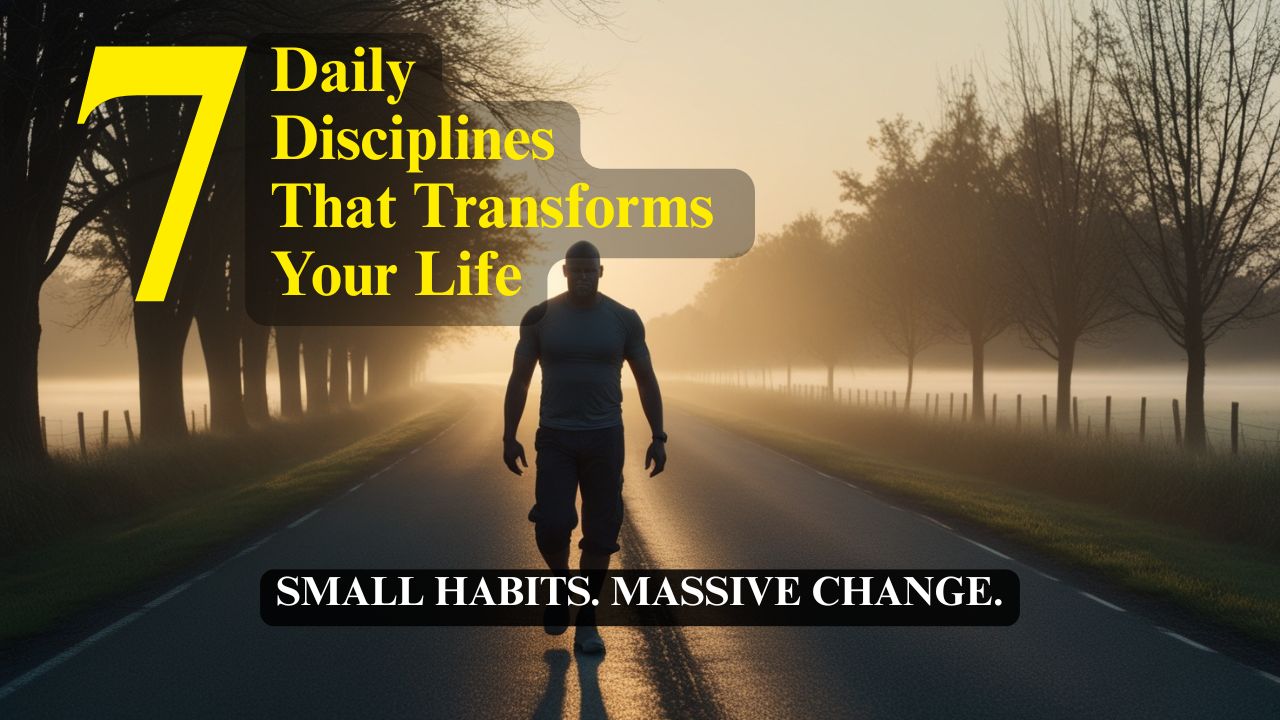
7 Daily Disciplines That Transform Your Life
The power to act with intention, to align your actions with your values, and to move steadily toward a life of purpose—even on days you don't feel like it.
Read Full Article
How to Build Unbreakable Discipline
Discipline is built—habit by habit, choice by choice, day by day. And the most powerful kind? The kind that doesn’t crack under pressure. The kind that becomes part of who you are.
Read Full Article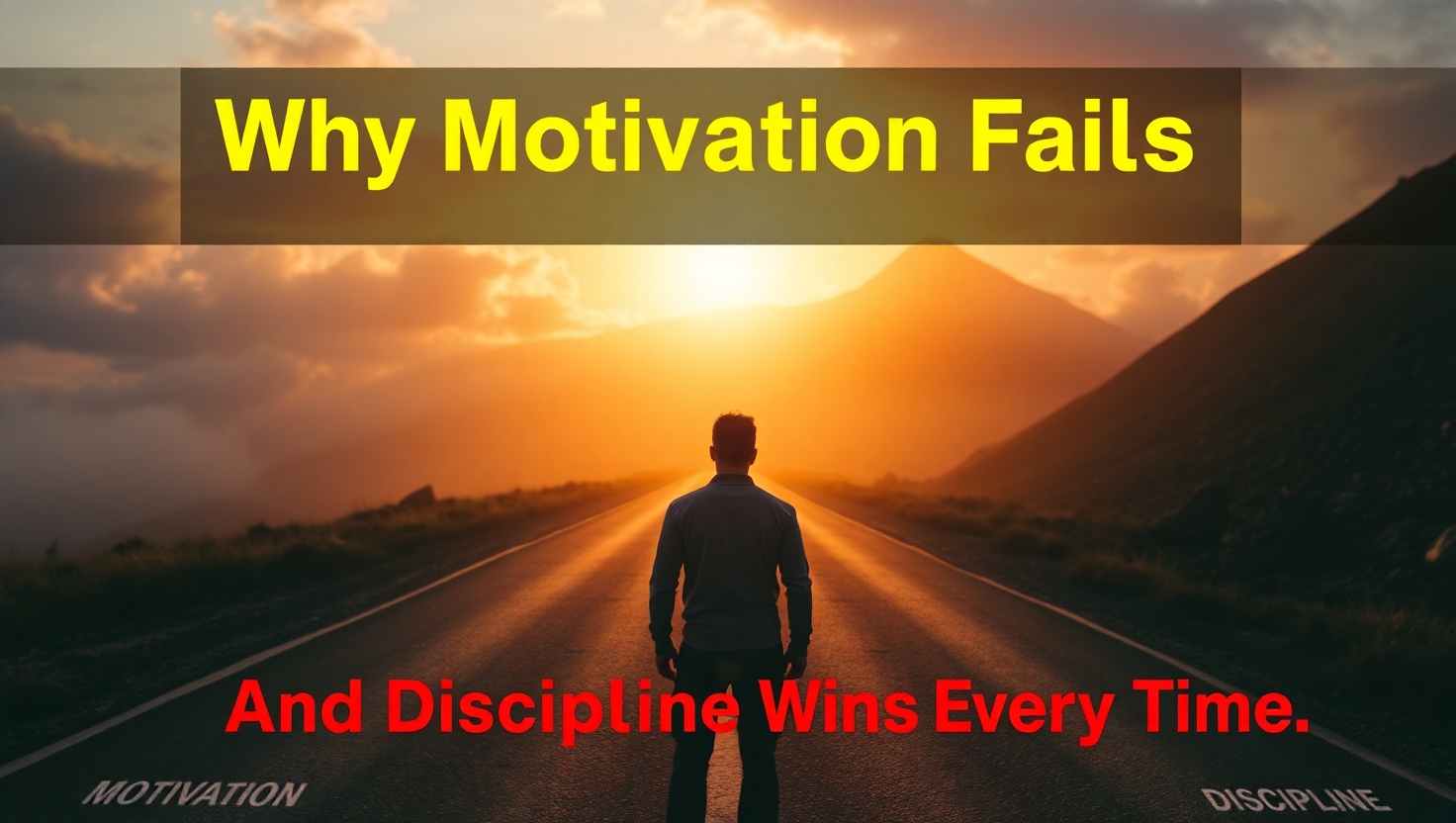
Why Motivation Fails And Discipline Wins Every Time
We all love the feeling of motivation—that surge of energy, that rush of inspiration that makes everything seem possible. But here’s the problem: motivation is unreliable. It’s emotional. It comes and goes. And if your goals rely on you “feeling like it,” you’re already in trouble.
Read Full Article
Discipline Over Desire
Desire is loud. It burns bright, talks fast, and loves to dream. But desire alone doesn't achieve much. Every person has desires. Very few have the discipline to bring them to life.
Read Full Article
The Science of Sticking
If you've ever tried to build a new habit, you've probably heard that it takes 21 days. This number gets thrown around so often that it feels like scientific fact.
Read Full Article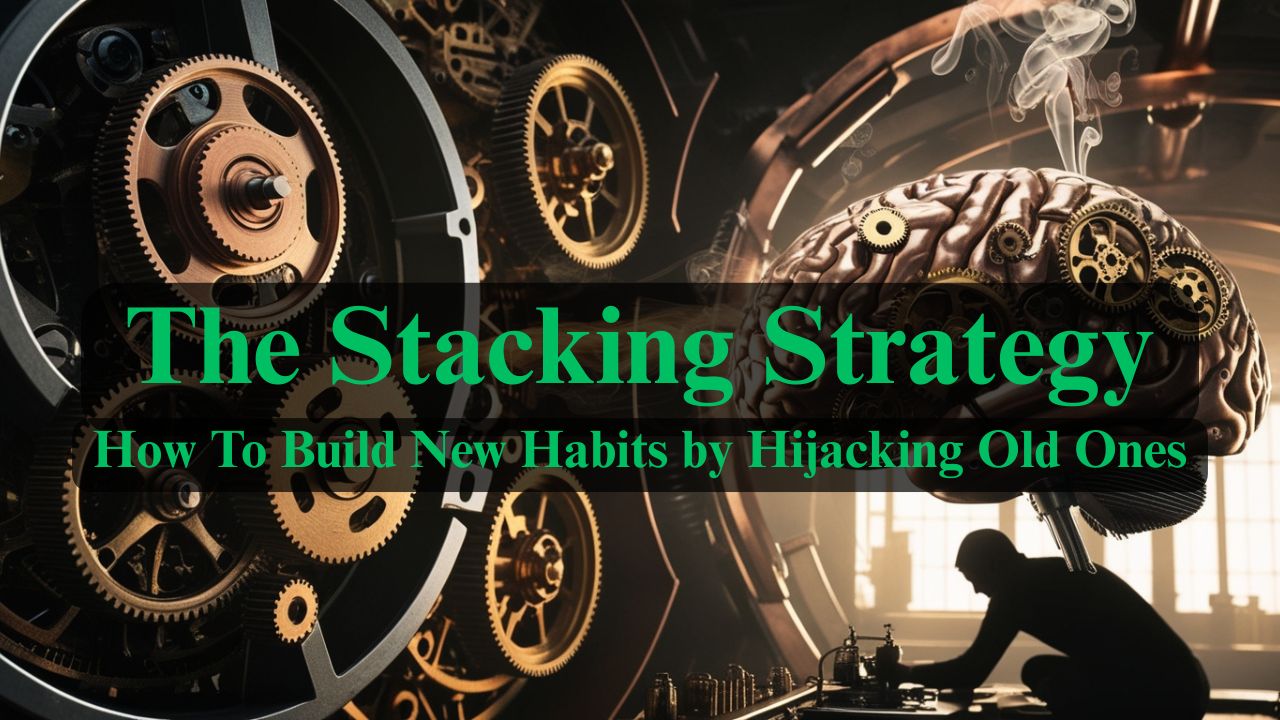
The Stacking Strategy
What if I told you that the habits you already have—even the ones you consider "bad"—could become the secret weapons for building the habits you want?
Read Full Article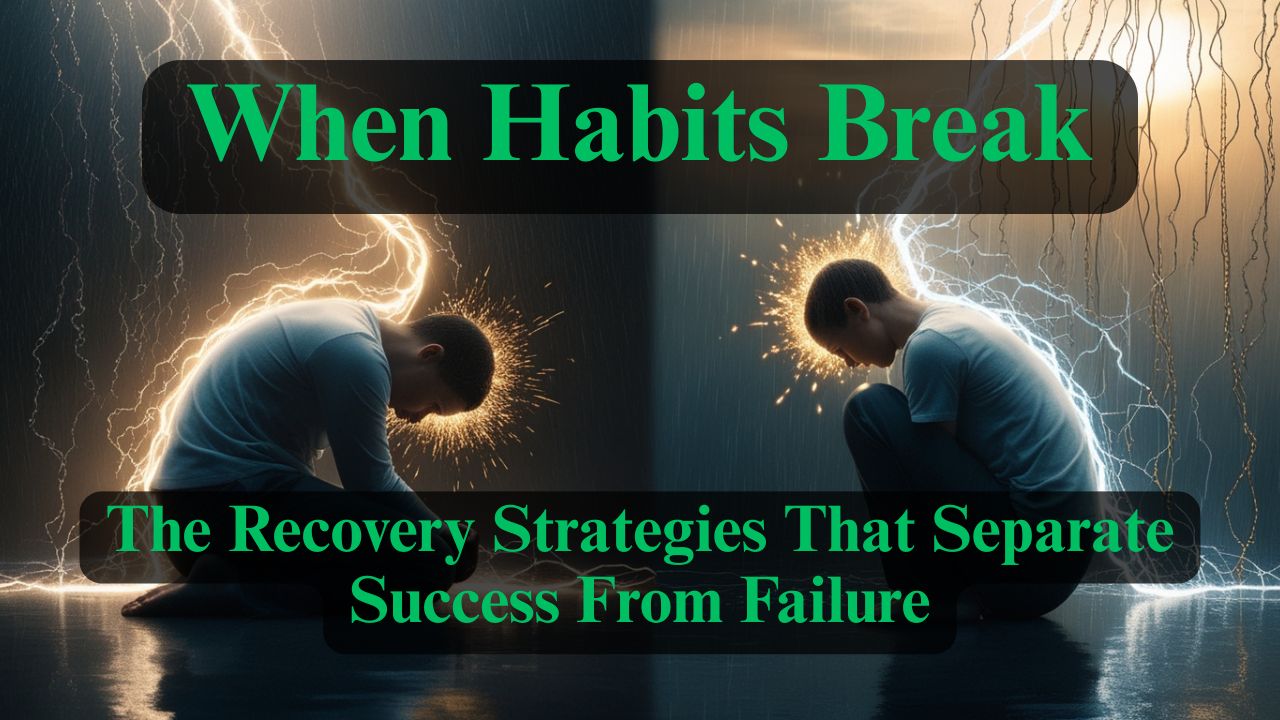
When Habits Fail - The Recovery Strategies That Separate Success From Failure
Here's what nobody tells you about building habits: you will fail. You'll miss days. You'll fall off track. You'll have weeks where everything falls apart.
Read Full Article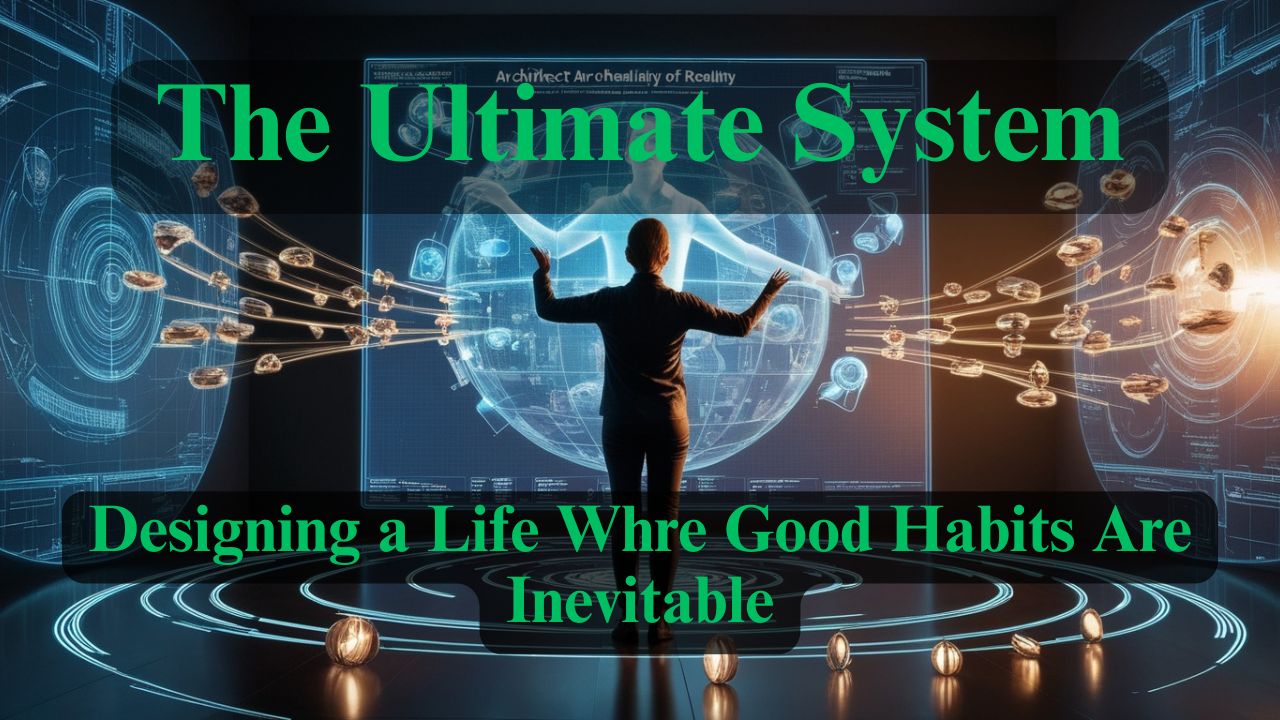
The Ultimate System - Designing a Life Where Good Habits Are Inevitable
You've learned to recognize habits, understand their formation timeline, stack them strategically, and recover from setbacks.
Read Full Article

